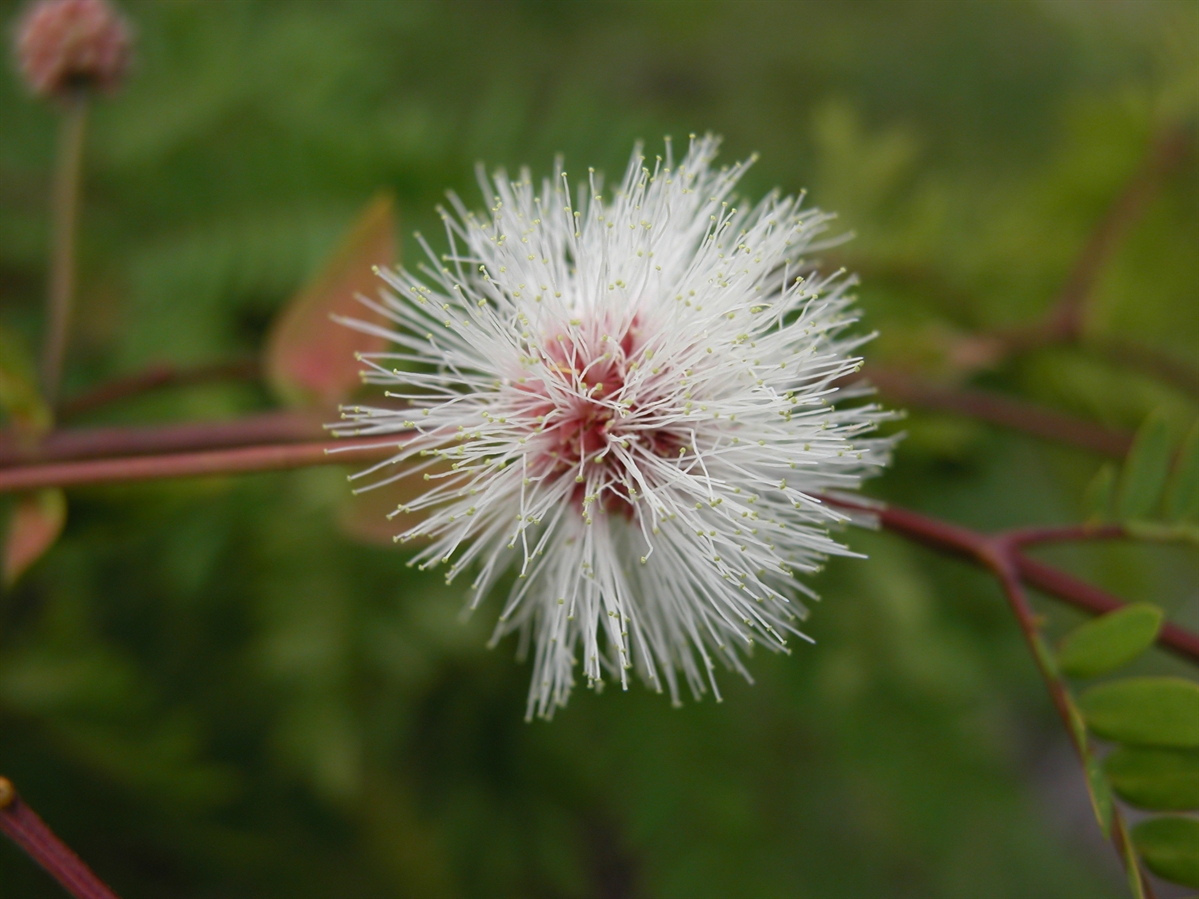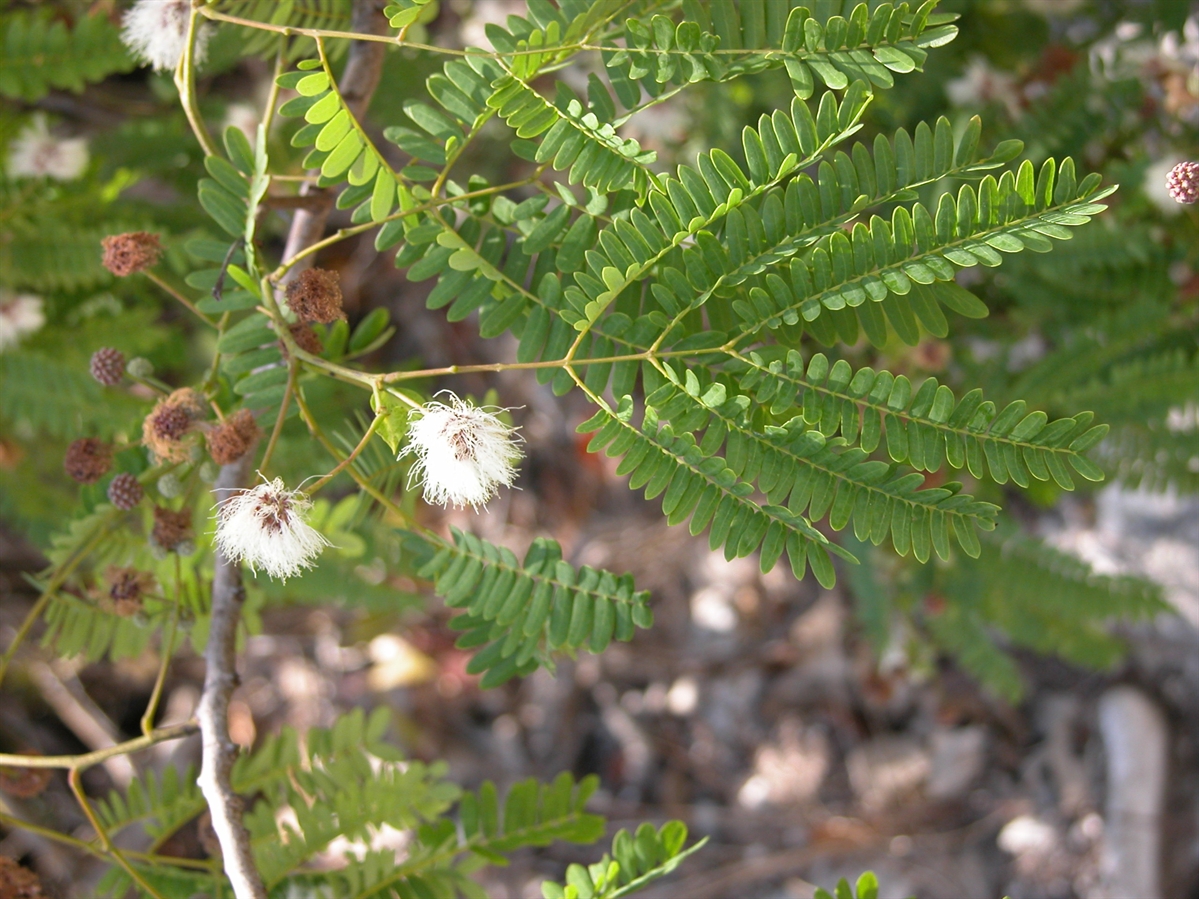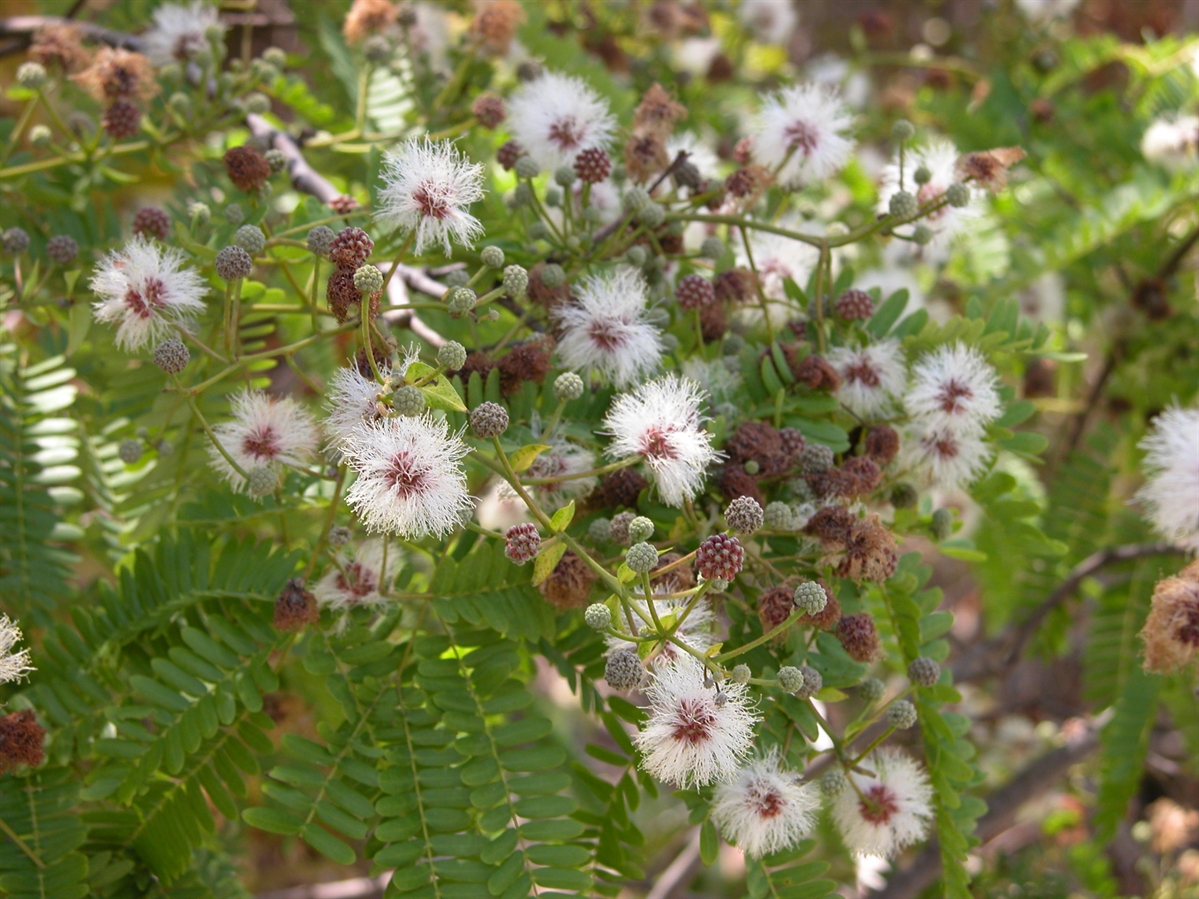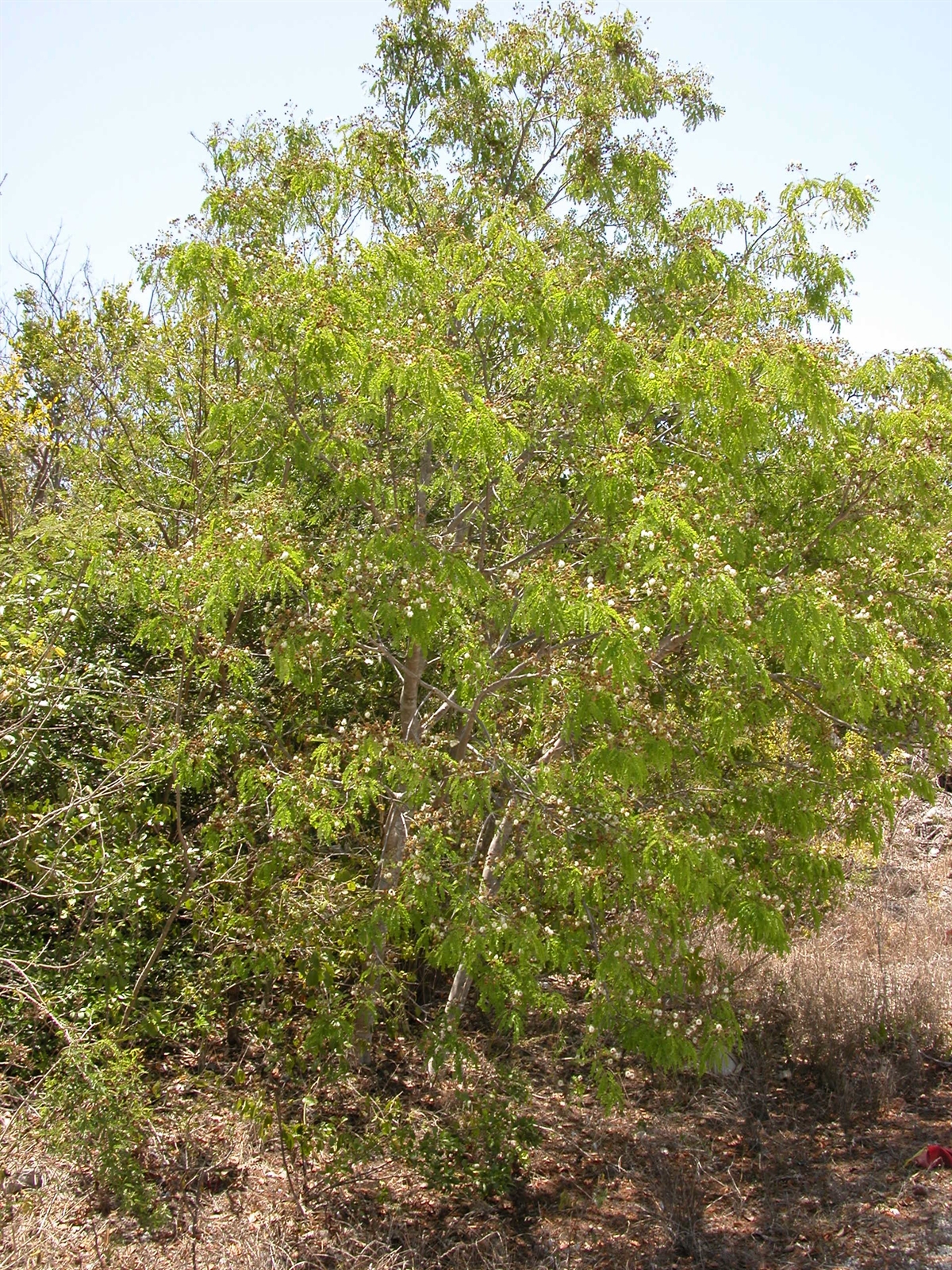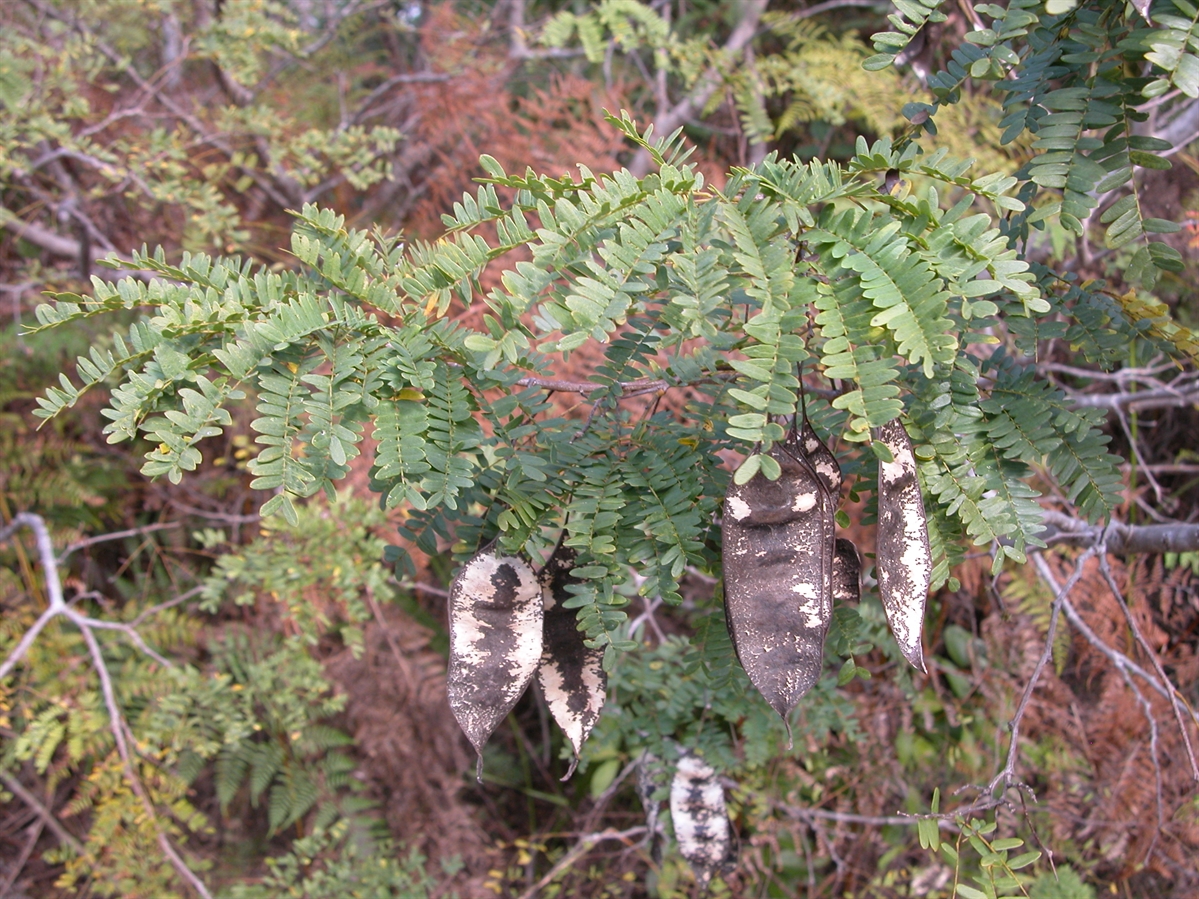Habit: Lysiloma latisiliquum grows as a medium to large tree up to 20 m in height with a trunk to 1 m in diameter. The bark is smooth and grayish white. The bipinnate leaves are arranged alternately with large ovate stipules at the base of the petioles. There are 2- 5 pairs of pinnae each with 10-35 pairs of leaflets. The leaflets are oblong with an obtuse leaf tip and entire margin.
The complete, perfect, actinomorphic flowers are arranged in heads with each flower subtended by a bract. There are 5 fused sepals in the calyx forming a shallow tube. There are 5 fused petals in the corolla forming a tube that exceed the calyx. There are numerous, white, showy stamens that are 8- 10 times as long as the perianth. The ovary is superior with a single locule. The fruit is a legume that becomes slightly revolute at maturity. Over time as the fruit ages the outer coating peels away so that the fruit is white and brown. The seeds are dark brown.
Habitat: Lysiloma latisiliquum grows in Dry Broadleaf Evergreen Formations- Forest/Shrublands (coppice), Pine Woodlands, as well as in Human Altered environments (yards and gardens).
Distribution: Lysiloma latisiliquum occurs throughout the entire Lucayan Archipelago as well as southern Florida, Central America, and the Caribbean region.
Medicinal/Cultural/Economic usage: Lysiloma latisiliquum has no known medicinal uses in the Lucayan Archipelago.
Lysiloma latisiliquum is sought after by wood carvers for its distinctive wood grain and has also been used by boat builders.
In southern Florida Lysiloma latisiliquum is used in the horticultural industry.
